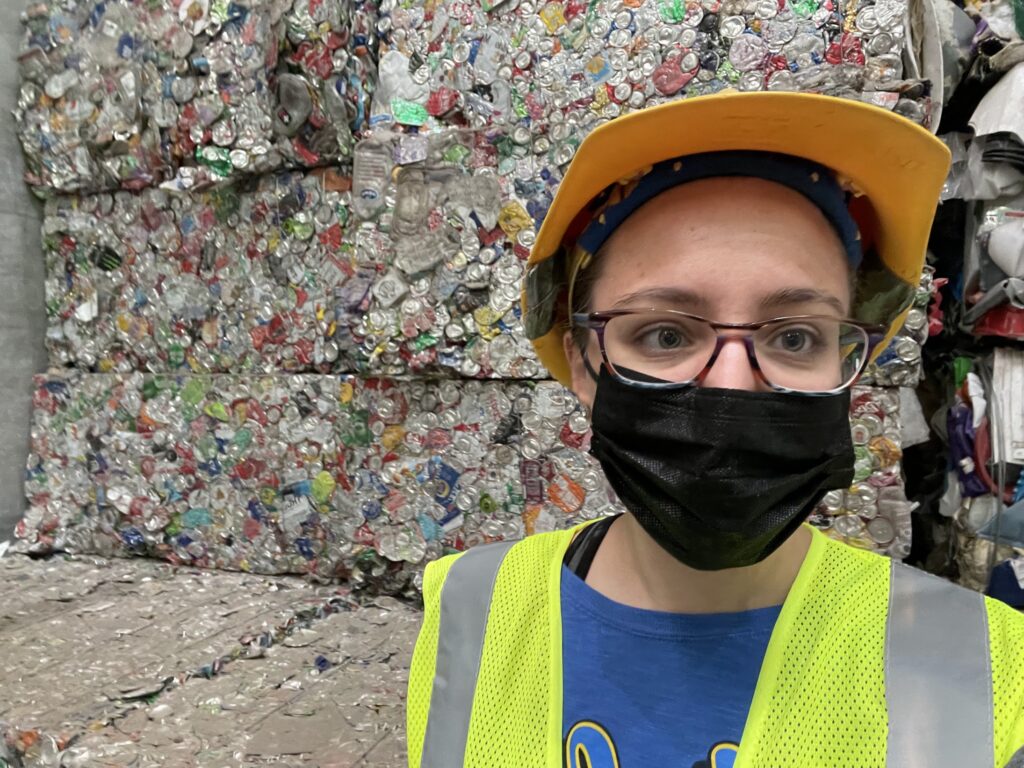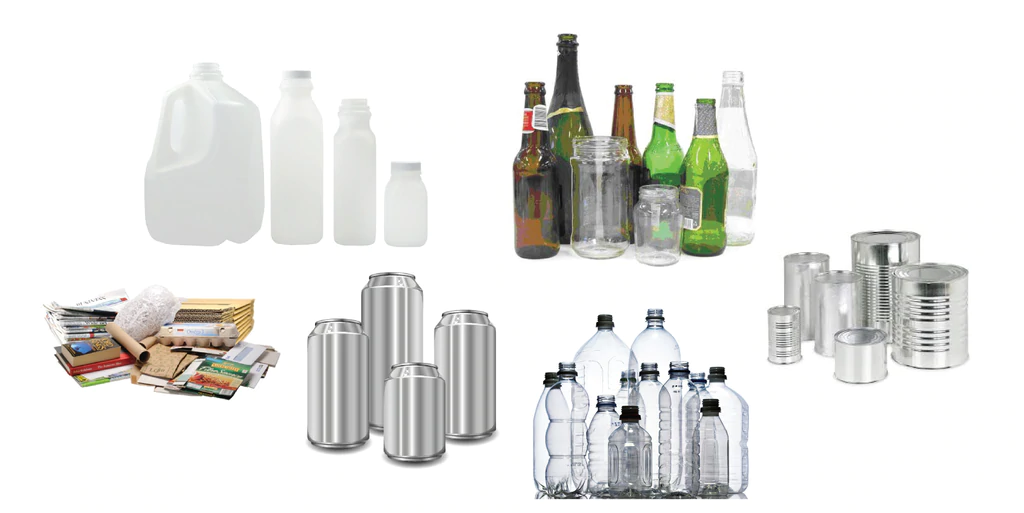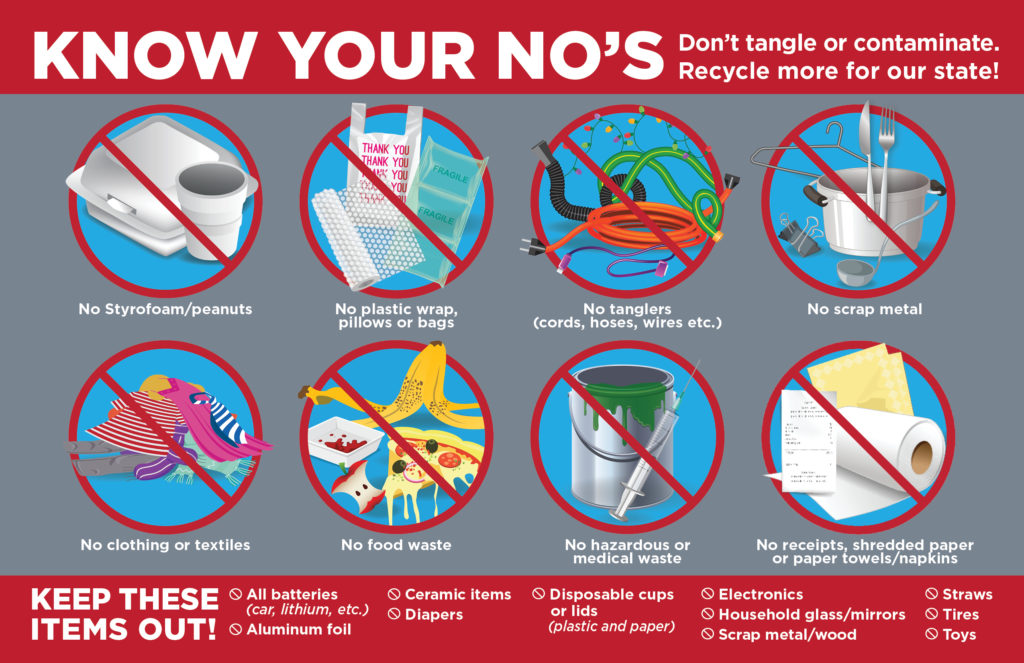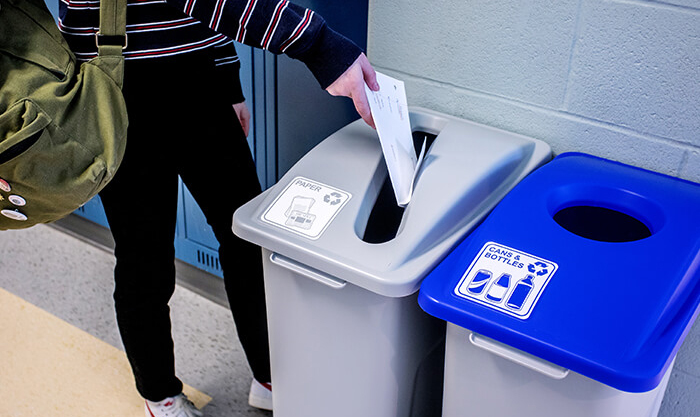Recycling Rules!
Written by Haley Gunther
April 11th, 2022

Pictured: Haley Gunther at a recycling facility in Southern California
Plastic pollution is a major global challenge, with over 380 million tonnes of plastic produced yearly around the world. The recycling process is a viable solution to mitigate the plastic pollution problem––when done properly. Unfortunately, the average person is often confused by the complicated rules and regulations of recycling, which can lead to improper waste disposal. This article aims to increase general knowledge regarding recycling, as well as put to rest common misperceptions that often result in incorrect recycling practices.
First of all, what things CAN be recycled?

There is one basic rule of recycling: if you are unsure if something can be considered recyclable, follow the “bottles, cans, paper or cardboard” motto. If the item fits into one of these categories, it often has the green light to be recycled.
-Bottles: Plastic bottles, glass bottles/jars, and jugs. Some jurisdictions require the removal of labels and stickers and the rinsing of items.
-Cans: Tin, aluminum, and steel cans.
-Paper: Paper, newspapers, and magazines.
-Cardboard: Flattened, clean cardboard.
Just as importantly, what CANNOT be recycled?

Characteristics of items that are not recyclable include:
-Items that are heavily contaminated with food or liquid.
-Loose plastic grocery bags or bagged recyclables.
-Flexible, lined, or laminated packaging (such as chip bags, pouches or milk cartons).
Common Misperceptions

The complexity and flexibility of recycling rules at different facilities often leads to misperceptions surrounding recycling.
-Myth: All plastics with the recycling symbol of the chasing arrows are recyclable. False. A recycling triangle on the bottom of a container does not guarantee the container’s recyclability! Whether or not it is deemed recyclable is dependent on local jurisdiction and the types of plastic the local facilities are equipped to handle. It’s best to check with your local recycling facility to determine which types of plastics are accepted for recycling.
-Myth: Don’t bother with recycling. It all ends up being sent to a landfill anyway. False. While it is true that a large portion of items in the recycling bin end up being diverted to landfills (due largely to improper recyclable sorting by everyday consumers), spreading awareness regarding correct recycling etiquette can increase the percentage of materials that get recycled. This can thereby improve recycling facility efficiency while simultaneously decreasing the need for virgin plastic production.
Final Thoughts
Recycling rules can be confusing, but our hope is that you now have a better understanding of which materials are recyclable and which aren’t. You can help make a difference by sharing your recycling knowledge with family, peers, and colleagues––thank you for doing your part to help make the future greener!
To see the original Aquarium recycling rules document, click here: Aquarium of the Pacific Recycling “Cheat Sheet”
*Please keep in mind that the rules presented on the document are specific to the recycling facility used by the Aquarium of the Pacific in Long Beach. Recycling rules vary by facility and jurisdiction.
